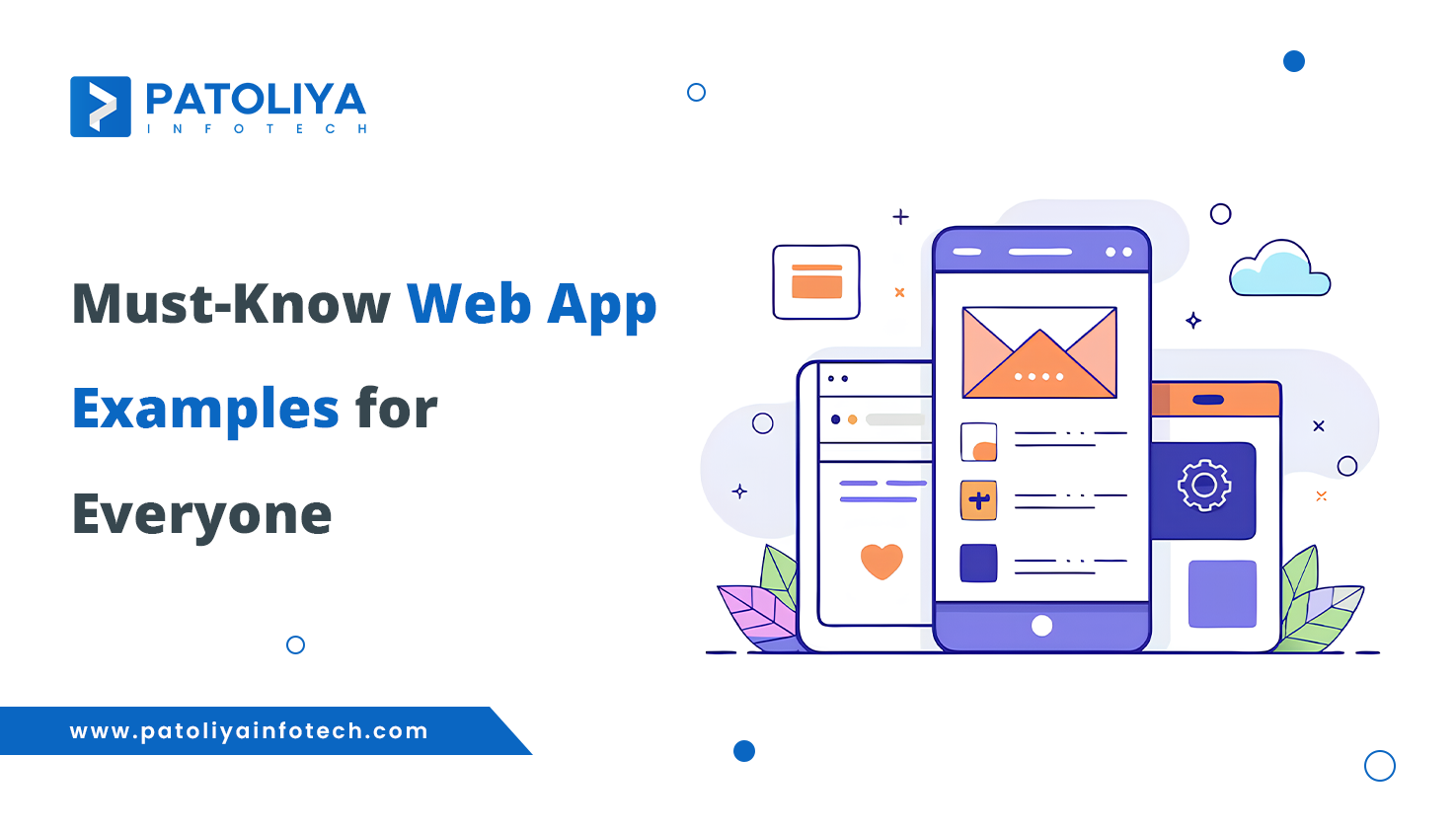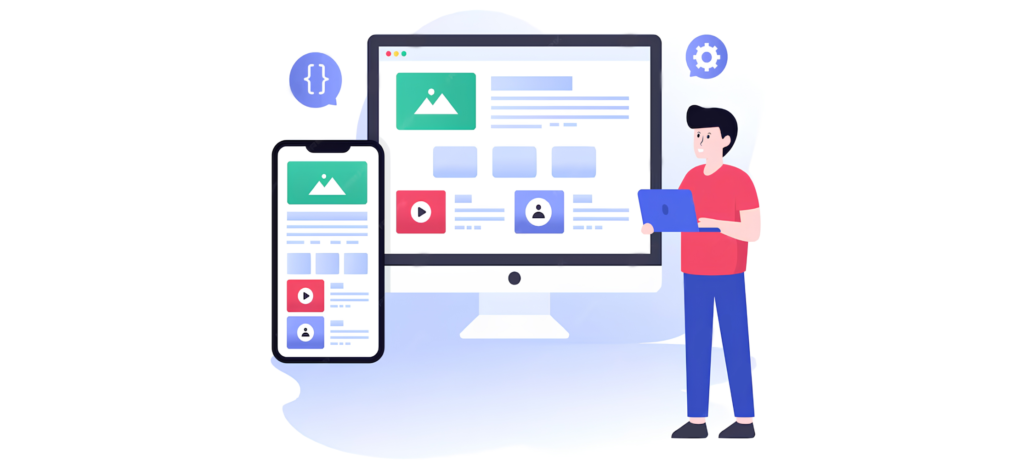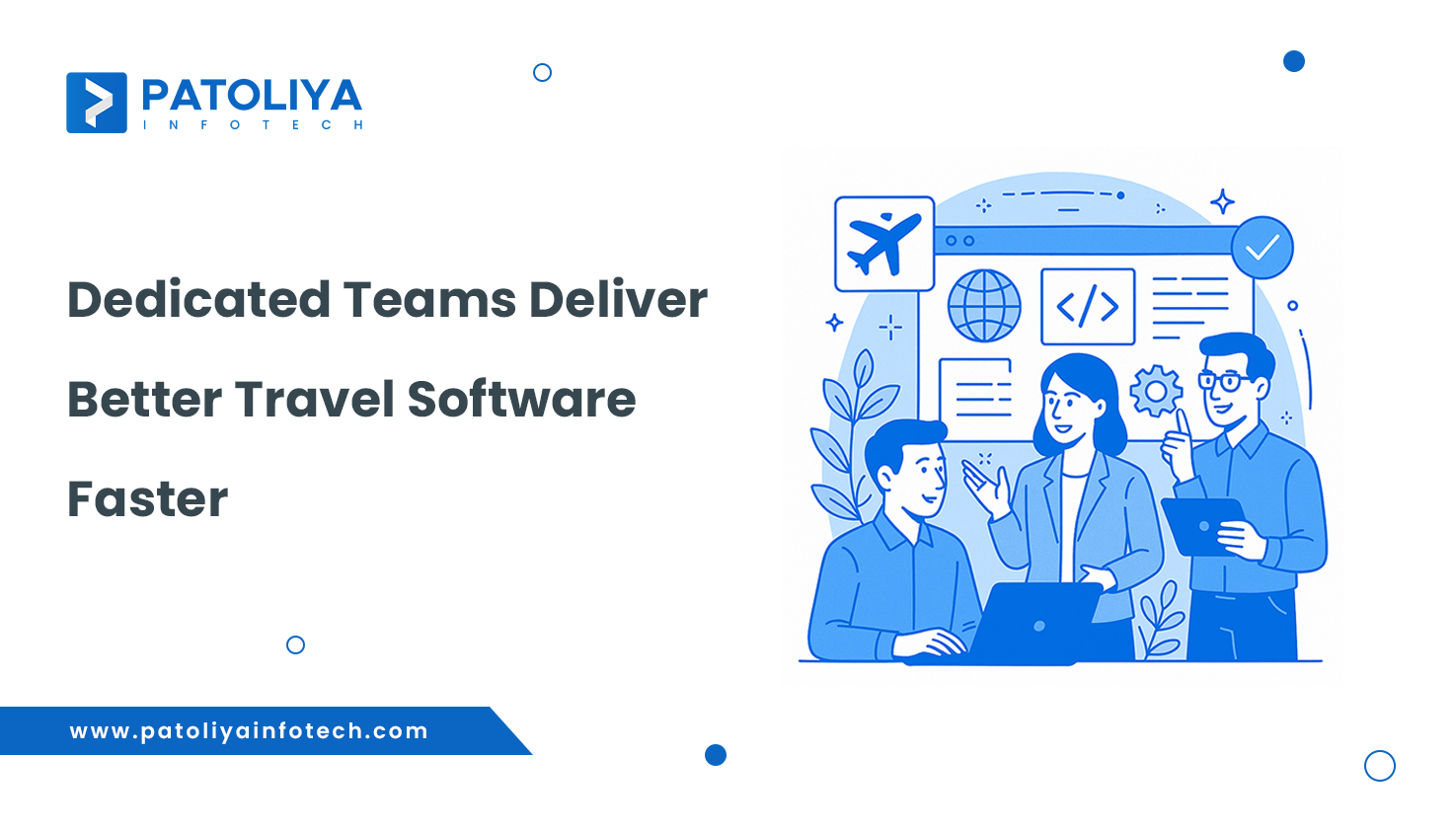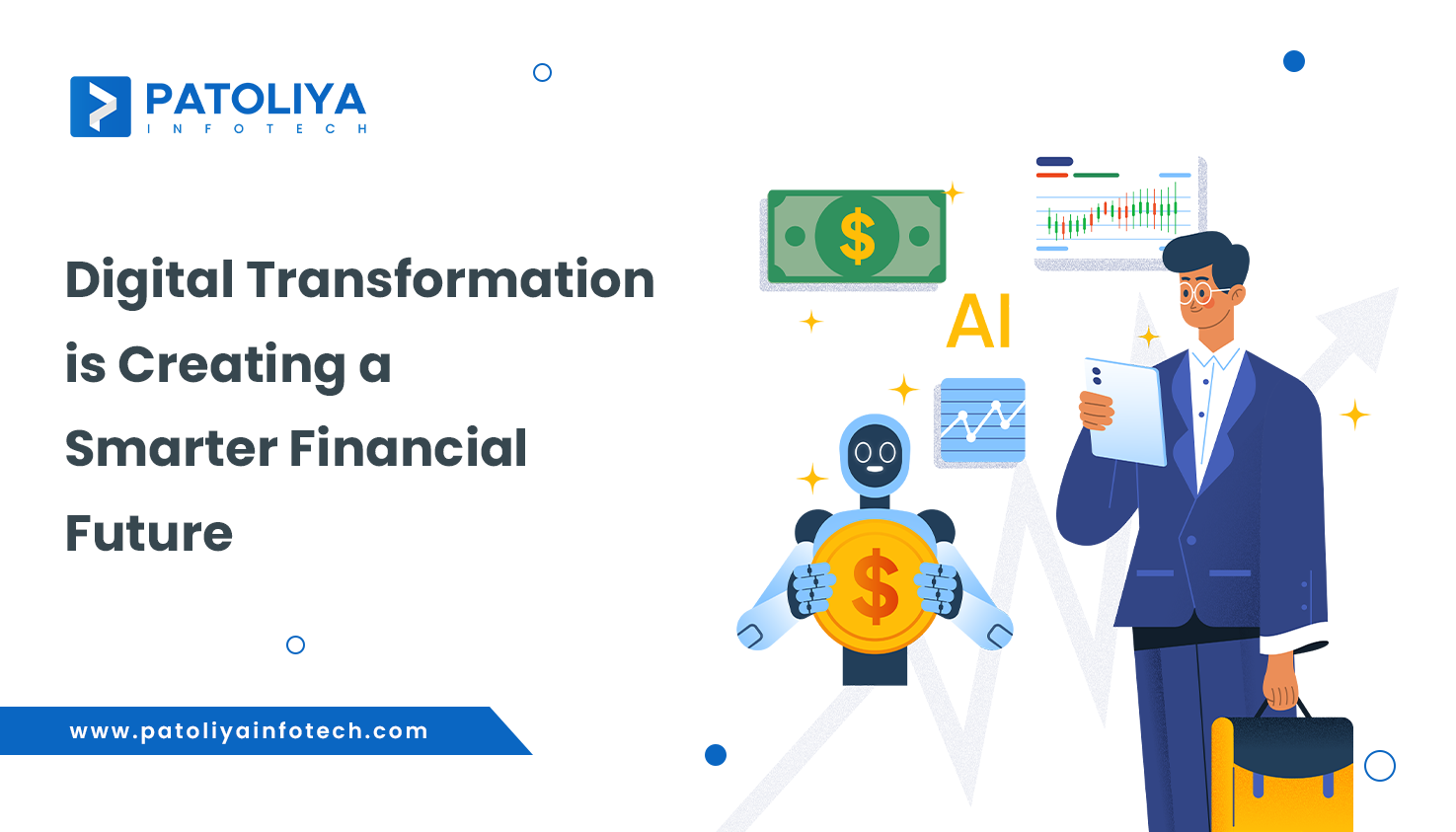Top Web Apps Shaping the Future You Should Know

Table of Contents
Examples for web applications show how the web has significantly transformed how we engage with technology. Web apps minimize the need for large software installs by allowing users to operate online.
Our everyday relationships with technology and one another have been completely changed by websites and online apps, which are now an essential part of our life.Web applications come with an infinite number of features to satisfy the user’s requirements, from entertainment systems to productivity tools. Here we examine a few notable and surprising online services, highlighting their use and impact.
Unlock the secret: What makes a website different from a web app? See how I mastered it!
Internet Applications' Importance
Accessibility
Any device with an internet connection, including desktop, laptop, tablet, and smartphone, may access web apps. By removing geographical restrictions, this degree of accessibility guarantees that users may work, communicate, and consume material from almost anywhere.
Cost-Effectiveness
Web applications may lower the cost of software development and maintenance for enterprises. Instead of creating different apps for every platform (Windows, Android, and iOS), businesses may construct a single online application that caters to all customers, which simplifies development and lowers overhead expenses.
Automatic Updates
Users of web apps always get access to the most recent version without having to download or install anything since updates are applied immediately on the server side. This guarantees that new features and security enhancements are instantly benefited by users.
Scalability
Growing user bases may be managed with ease by scaling web applications. Without having to make major modifications to the application itself, businesses may easily scale up to meet user demand by adjusting their server capacity to manage additional traffic.
Looking to build a web app but unsure which type to choose? Our guide breaks down 10 options for you!
New Directions in Web Applications

Web apps are evolving along with technology. The following are a few new developments that will influence how web apps are used going forward:
Progressive Web Apps (PWAs)
PWAs combine the best aspects of online and mobile apps to deliver a near native web experience. It is installed on the home screen of mobile devices, allowing for quick loading and offline operation. Companies like Starbucks and Twitter have used PWAs to improve user engagement and experience.
Artificial Intelligence (AI) Integration
Online apps are rapidly integrating artificial intelligence to enhance user experience. AI is assisting businesses in providing experiences that are customized to each client's requirements, from chatbots that provide customer support to suggestions that are unique to each consumer.
Voice User Interface (VUI)
As voice-activated devices become more and more common, web applications are beginning to include speech user interfaces. By making voice commands a viable means of interacting with programs, this enhances the accessibility of technology, especially for individuals with disabilities.
Security Enhancements
As cyber threats become more complicated, web applications are incorporating advanced security features like multi-factor authentication, end-to-end encryption, and regular security audits. User data protection is becoming more and more crucial for developers.
10 Must-Know Examples for Web Applications
1. Google Docs
The production and sharing of documents has been completely transformed by the cloud-based word processing program Google Docs. Version control is not necessary since it enables numerous people to modify and comment on documents in real-time. Important attributes consist of:
- Real-time collaboration: Many people can collaborate on a document at once.
- Accessibility: Any internet-connected device may be used by users to view their papers.
- Saving changes automatically lowers the chance of data loss.
Due to its extensive usage in both personal and professional contexts, Google Docs is an essential tool for teams working together.
2. Netflix

Netflix is a well-known streaming service with an extensive collection of films, TV series, and original programming. The user-friendly layout of its online application makes for an improved watching experience. Notable characteristics consist of:
- Personalized suggestions: The site makes content recommendations based on user preferences by using algorithms.
- Select titles can be downloaded by users for offline watching.
- Multiple profiles: One account can have multiple profiles created by different users, enabling customized content curation.
The entertainment sector has been greatly impacted by Netflix's popularity, which has altered how consumers consume media.
Don't just dream about your app—start building it! Get our guide and take the first step today.
3. Canva
Canva is a visual design platform that helps people at all skill levels to design more easily. Its online application has a drag-and-drop interface and a vast library of templates and design elements. Important characteristics include:
- Template library: Thousands of pre-made templates are available for users to select from for a range of uses.
- Collaboration tools: Real-time design collaboration is possible for teams.
- Interface that is easy to use: Even non-designers may utilize it thanks to the simple design tools.
With the help of Canva, people and organizations can now produce graphics of a high caliber without requiring a lot of creative experience.
4. Facebook
With billions of members worldwide, Facebook is one of the most widely used social networking sites. Its online application makes community building, sharing, and communication easier. Notable attributes consist of:
- Users may view updates from pages they follow, friends, and family in their news feed.
- Direct contact is possible using the platform's integrated messaging features.
- Users can organize and join events and groups according to common interests.
Facebook continues to dominate social media and has a significant impact on how people communicate online, despite its controversy.
5. Uber
Uber's online platform transformed the transportation industry by facilitating smooth communication between drivers and passengers. Important characteristics consist of:
- Real-time tracking: Riders may share their whereabouts with others and follow their ride in real-time.
- Many payment alternatives: To improve convenience, the app offers a number of different payment ways.
- Rating system: To encourage accountability, drivers and riders can grade one another.
People may now more easily obtain transportation services thanks to Uber's transformation of urban mobility.
6. Medium

Users may reach a wide audience by sharing their thoughts and stories on the publishing platform Medium. Readability and user experience are key components of its online application. Among the noteworthy aspects are:
- Simple interface: Reading and writing are made more enjoyable by this minimalistic style.
- Community interaction: Users are able to participate in conversations, applaud for tales, and follow writers.
- Options for monetization: The Medium Partner Program allows writers to get paid.
With its focus on narrative, Medium has grown to be a well-known platform for authors and readers.
7. Slack
Slack is a tool for collaboration that has revolutionized teamwork and communication. Users may combine it with other third-party apps, share files, and create channels for different projects via its web application. Important characteristics consist of:
- Real-time communications: By enabling instant messaging, team members may lessen their dependence on email.
- Integrations: Slack can be integrated with Trello, Google Drive, and Zoom to give teams a centralized workspace.
- Search functionality: Users may find old files and communications quickly, which increases efficiency.
Slack has grown to be important for distant teams and businesses trying to boost cooperation and communication.
8. Trello
Trello is a project management application that assists teams in graphically organizing tasks and projects through the use of boards, lists, and cards. Its online application is incredibly user-friendly and straightforward. Notable characteristics consist of:
- Drag-and-drop interface: Cards may be quickly moved between lists to show the status of a project.
- Tools for collaboration: Setting deadlines, attaching files, and leaving comments on cards all help to promote teamwork.
- Customized boards: By allowing users to design boards that are customized to their own processes, productivity is increased.
Trello is a favored tool for organizations trying to optimize their workflows because of its visual approach to project management.
Confused about the web app development process? Our guide breaks down the 7 stages for you!
9. Spotify

Users of the music streaming service Spotify have access to millions of songs and podcasts. Its online application offers a smooth audio experience. Crucial elements consist of:
- Playlists that are specifically crafted for each user are generated by Spotify using algorithms that analyze their listening preferences.
- Social sharing: By allowing users to share playlists and songs they love with friends, a community of music enthusiasts is created.
- Traveling is made simple for Premium customers since they may download songs for offline listening.
Spotify has completely changed the way that people listen to music, switching from traditional ownership to streaming services.
10. Zoom
During the epidemic, Zoom, a video conferencing software, experienced tremendous growth in popularity. Numerous options for webinars and virtual meetings are available through its online application. Notable characteristics consist of:
- Superior audio and video quality: Zoom's consistent audio and video quality makes it appropriate for business meetings.
- Screen sharing: This feature allows users to collaborate and present more easily by sharing their screens during meetings.
- Breakout rooms: By dividing attendees into smaller conversation groups, hosts may raise interest levels during longer sessions.
Zoom has changed the way we communicate with others by becoming associated with virtual communication and distant work.
The Future of Web Applications
Web applications have a bright future ahead of them due to continuous technological advancements and rising user expectations. More developments and features are expected to affect the future landscape:
Increased Focus on User Experience (UX)
Companies will prioritize the user experience which, as competition expands, can differentiate. The use of easy connectivity, fast delivery times and water transportation are all part of this.
Greater Emphasis on Data Privacy
Web applications will need to have stronger data security protections as data privacy concerns continue to grow. The user’s permissions and data will need to be clear.
Integration of Augmented Reality (AR) and Virtual Reality (VR)
It is to be expected that AR and VR technologies will have to be incorporated into web apps in their development, especially in industries such as e-commerce, education and entertainment, where they will provide a more independent user experience.
Low-Code and No-Code Development
With the emergence of low- and unregulated platforms, many people and companies can develop web apps without in-depth programming knowledge. Democratization of app development will lead to more creativity and innovation.
Conclusion
Web applications have completely changed the way we communicate with technology and how we live and work. These layouts have become indispensable in our daily lives, working on everything from collaboration assistants like Google Docs to streaming services like Netflix. Knowing what’s new in web applications will allow us to use them effectively as we continue to experiment with new features and technologies
We can look forward to a world where technology improves our lives, strengthens relationships, and inspires creativity as we embrace the future of web applications. Whether you work in marketing, are a creative person, or just a computer enthusiast, knowing these online activities and what they mean can help you make sense of the digital world in an ever-changing landscape
These websites provide excellent examples of the diversity and user-centered design that characterizes modern online experiences. From entertainment services like Netflix to productivity tools like Google Docs, each service has specific functions that enhance accessibility and user experience. Understanding this model is important for all those interested in the changing landscape of communications technology.



